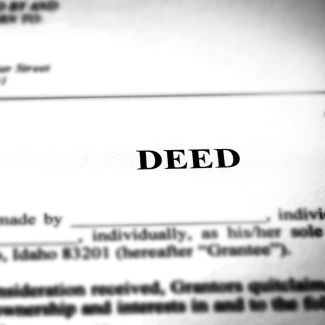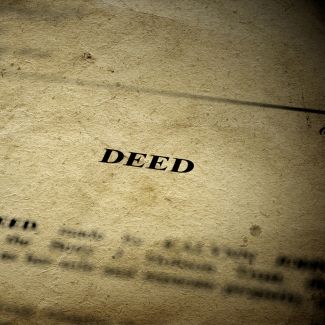When it comes to transferring property rights to a nominee, a Relinquishment Deed is crucial, especially in cases where the owner passes away without leaving a will. Such a deed is specifically for inherited properties and can only be transferred to legal heirs like siblings, children, or parents. It’s advisable to enlist the expertise of a competent lawyer to ensure the deed’s validity and prevent potential challenges. The registration process takes place at the sub-registrar office, with fees including registration fees and stamp duty varying depending on the state or union territory.

Things we covered for you
What is the Meaning of a Relinquishment Deed?
A relinquishment deed refers to a legal document in which a property holder releases or transfers his or her legal right of property to someone else. In this, the legal right of property is given up by the owner to another person. Since it is a legal document, the property relinquishment deed needs to be carried out carefully and registered following the governing laws and the compliances. A good property lawyer and consultant are required for the proper execution of a relinquishment deed and compliance.
To register a relinquishment deed, after drafting the deed, necessary documentation is required. The person giving up the legal rights to his or her property is referred to as the executant, and the person receiving the property is called a nominee. Both the executant and the nominee must be physically present at the registrar’s office to register a relinquishment deed. It is considered valid only when the recipient agrees to accept the rights of ownership of property.
When is a Relinquishment Deed Created?
A relinquishment deed needs to be created when the owner of a property dies without making a will, and the legal heir of the property decides to give up the legal rights of the property to a co-sharer or a co-owner. It is important to note that a relinquishment deed cannot be registered in the name of any other third person. The person in whose name the deed is being done needs to have a share in the property. Only the inheritor can transfer the property.
Who Can Create a Relinquishment Deed?
A relinquishment deed can be created by a person who has a share in the inherited property. In other words, a co-sharer of the property can relinquish their right to the property in favour of another co-sharer of the property. This includes the person’s children, mother, father, sister, and brother. A property cannot be relinquished in a third person’s name.
Why is it Necessary to Register a Relinquishment Deed?
It is compulsory to register a relinquishment deed to make the transferring of rights of property valid legally. This is governed by Section 17 (1) b of the Registration Act, 1908. This act serves as a tool to validate the transfer of the right of immovable property to the other co-owner. This legalises the process of transfer of property.

Documents Required for Relinquishment Deed
When preparing a relinquishment deed, it’s essential to have the necessary documentation to ensure a smooth and legally binding process. The following documents are typically required:
- Identification Proof: Valid identification proof such as an Aadhar card, passport, or driver’s license of all parties involved in the relinquishment.
- Property Documents: Original property documents, including title deeds and any previous transfer deeds.
- No Objection Certificate (NOC): If applicable, a No Objection Certificate from other legal heirs or stakeholders indicating their consent to the relinquishment.
- Stamp Paper: Non-judicial stamp paper of appropriate value, as per the stamp duty regulations of the respective state or union territory.
- Affidavit: An affidavit affirming the voluntary nature of the relinquishment and stating that there are no pending legal disputes related to the property.
- Passport Size Photographs: Recent passport-size photographs of all parties involved in the relinquishment.
- Witnesses: The presence of two witnesses with their identification proofs for attesting the deed.
What is the Sample Format for the Relinquishment Deed?
The sample deed of relinquishment format is given below:
Read: Stamp Duty and Property Registration Charges in Delhi
RELINQUISHMENT DEED
This deed of relinquishment draft is made and executed on this ___day of ________ by
________________, ______(relationship) of Late _________________ and _________________,
____________ of Late ___________________, residents of _________________________________
_________________________________________________________, hereinafter called the
EXECUTANTS/RELEASORS
IN FAVOUR OF
________________, _______ (relationship) of Late ___________________ hereinafter called the
Releasee.
Whereas Late ________________ was a subscriber under the National Pension System with
PRAN ________________.
Whereas the said Late ____________ died intestate and without nominating anyone to receive
the claim for withdrawal of accumulated pension wealth, leaving behind the following legal
heirs:-
Sr no. / Name /Age/ Relationship / Address
1.
2.
3.
NOW THIS DEED WITNESSETH AS UNDER:
The Executants/Releasers out of natural love and affection and without any monetary
consideration, hereby wish to release and relinquish their respective shares in the claim under
National Pension System, in favour of _________________, _____ (relationship) of Late
________________, and hereby affirm and declare that they and their legal heirs shall have no
right, claim or interest in the said claim for withdrawal of accumulated pension wealth of Late
________________ and same shall vest absolutely in the said _______________,
__________(relationship) of Late ________________, the Releasee.
IN WITNESS WHEREOF the Executants/Releasers and the Releasee have signed this deed of
relinquishment on this day, month, and year first mentioned above in the presence of the
following witnesses; –
(A- _________________) (B-__________________) (C-__________________)
(Executants/Releasers)
Witnesses:
Name/ Address/ Signature
- Witness 1
- Witness 2

How to Register a Relinquishment Deed?
First, a draft is made of the relinquishment deed on a stamp paper of Rs. 100. Be careful not to make any errors regarding details and spelling. Try to keep the language simple so that the deed is easily understood by the concerned parties. The deed will be registered in the sub-registrar office of the area in which the property is situated. All the concerned people need to be physically present to register the deed. Along with this, they must have all documentation prepared in advance before paying the registration fee. After the verification of the documents by the officials, the relinquishment deed can be collected in about a week.
Read: Demystifying the Adjudication Process in India: Understanding its Significance and Implementation
What is the Difference Between a Relinquishment Deed and a Gift Deed?
A relinquishment deed is done when an inherited property is being relinquished. In this case, the legal rights to the property are being relinquished, i.e., given up. Also, only a co-owner of the property can be the nominee. In some cases, compensation is also required. Whereas, on the other hand, in the case of a gift deed, the property doesn’t have to be an inherited property. As the name suggests, the property is being gifted from one person to another person. Any person can be the receiver of a gift deed. A gift deed doesn’t require any compensation. Read more about gift deeds from here.
Can a Relinquishment Deed be Challenged or Revoked?
Relinquishment deeds are not usually revoked. However, in some exceptional cases, the co-owner can revoke it. The cases include fraud by duping the co-owner use of force to make the agreement or misinterpretation of the documents by the person. If the other co-owner doesn’t agree to the cancellation of the deed, then the matter is resolved in civil court. It can be cancelled only within the first three years after the registration of the relinquishment deed.

It is essential to register a relinquishment deed because an unregistered deed is not considered valid. When it comes to legal matters and paperwork, you have to be especially careful. So, to be on the safe side, always try to hire a professional. When forming a relinquishment deed, an experienced lawyer and consultant should be hired to avoid any errors and mistakes in the registration process. You can comfortably avail of these services from NoBroker by clicking below. NoBroker Legal Services provides an array of services related to property and paperwork. Apart from this, you can get services like home loans, home services like cleaning and painting, interior design and more.
Frequently Asked Questions
Ans: Yes, several significant case laws on relinquishment deeds have shaped legal precedents regarding property rights and inheritance, providing valuable insights for property owners and legal practitioners alike.
Ans: The procedure for a relinquishment deed involves drafting the deed, obtaining necessary documentation, executing the deed in the presence of witnesses, and registering it at the sub-registrar office. It’s crucial to ensure all legal requirements are met for a valid relinquishment.
Ans: A draft of the release deed serves as a preliminary document outlining the terms and conditions of releasing property rights. It helps ensure clarity and agreement between parties before the final deed is executed.
Ans: The draft of the relinquishment deed serves as a preliminary version of the deed, outlining the terms and conditions of property transfer, ensuring clarity and mutual understanding between parties before finalisation.
Ans. A relinquishment deed is a legal document that governs the transfer of legal rights of property from one co-owner to another. It can be formed with or without the consent of the involved parties. Whereas in the case of a release deed, it is required for both parties to consent to the relinquishment of rights. These terms are sometimes used interchangeably.
Ans. A co-sharer can challenge a relinquishment deed on a particular basis, such as if fraud was committed against them or they were forced to give their consent or misinterpretation of the person’s final document.











